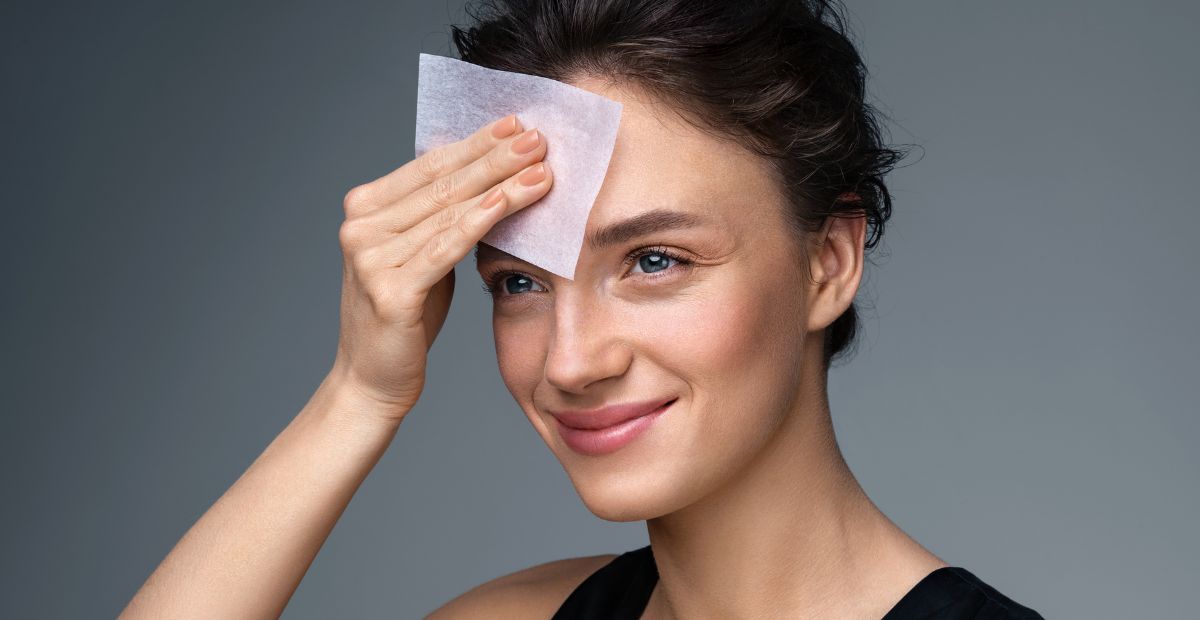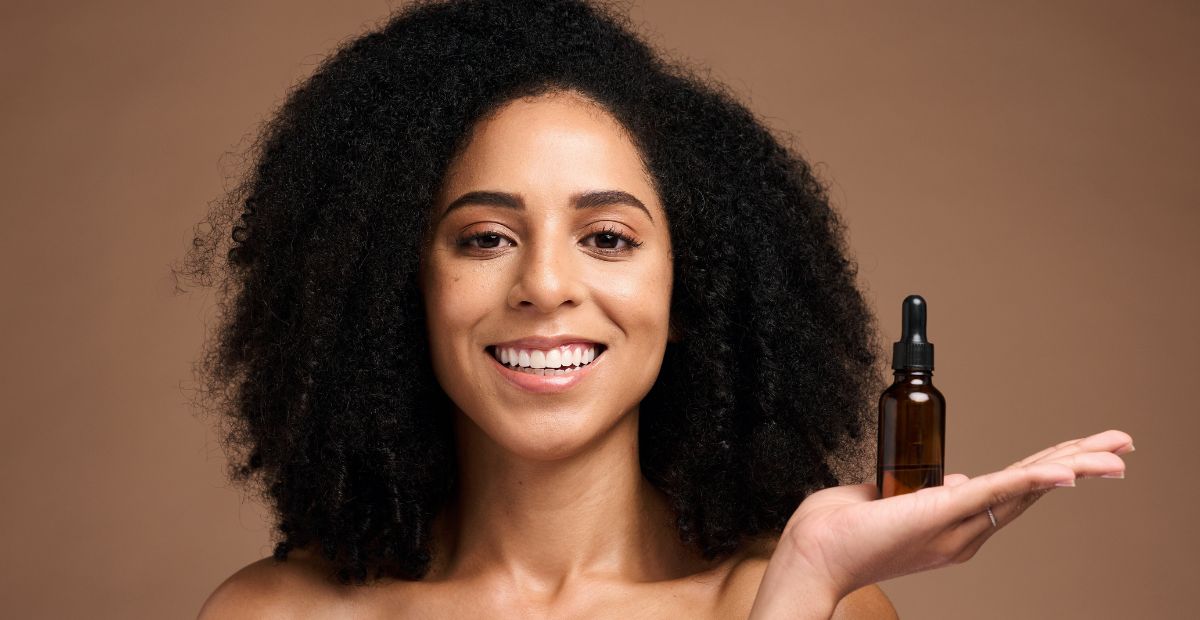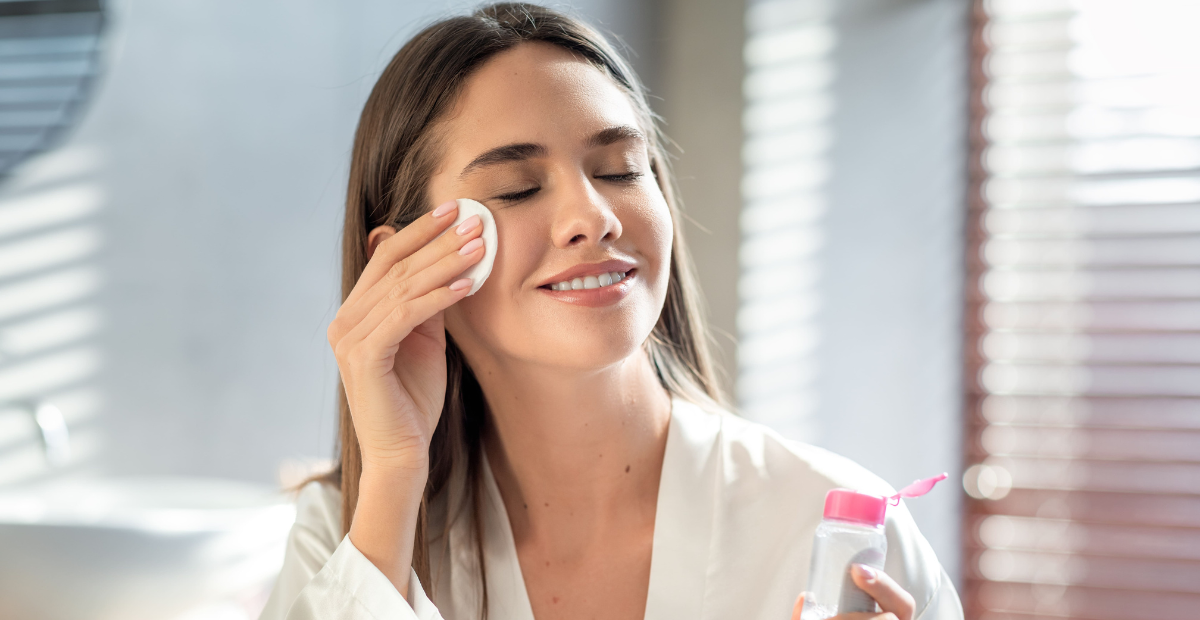Hair Care Guide: How to Take Care of Your Hair in Summer
Onskin Content Team
Your guides through the skincare chaos

White sand, ocean waves, long beach walks, and poolside lounging… sounds perfect, right? Well, maybe not if you ask your hair and skin—all that summer fun can be pretty tough on them. And while we usually protect our skin with sunscreen and clothing, our hair often gets left out. In this post, we’ll talk about how to take care of your hair in summer so you can enjoy your seaside vacation without turning your hair into a tumbleweed.
Why Are Seaside Vacations and Summer Activities So Hard on the Hair?

When the weather warms up, we naturally spend more time outdoors, especially during vacation—there’s just so much to do and so many places to explore! But with all that extra outdoor time comes more exposure to the sun, wind, and ocean or pool water, which can really take a toll on our skin and hair. Here are the main culprits and how they can weather our hair.
Culprit #1: The Sun or Why Is Sun Protection the Most Important Summer Hair Care Tip
While sun damage to our hair isn’t as obvious as sunburns, UV protection is just as important for our hair as it is for our skin. UV rays can erode the outer layer of the hair, called the cuticle, and damage the hair pigment, melanin. These are the two most important defenses that keep our strands whole and healthy.

When the cuticle and melanin get damaged, the proteins in the hair become vulnerable to further UV damage. This makes the hair more permeable to aggressive chemicals and prone to breakage and water loss. That’s why too much sun exposure can leave your hair showing signs of damage similar to those caused by frequent heat treatments or bleaching.
Just Dyed Your Hair? The Sun Will Beat the Dye Right Out
If you color-treat your hair, you probably want the color to stay fresh and bright for as long as possible, right? Many people use special shampoos, masks, and conditioners for color-treated hair to keep the pigment vibrant, just like when they left the salon. However, if you’re not using sunscreen for your hair, all that time, money, and effort can go to waste.
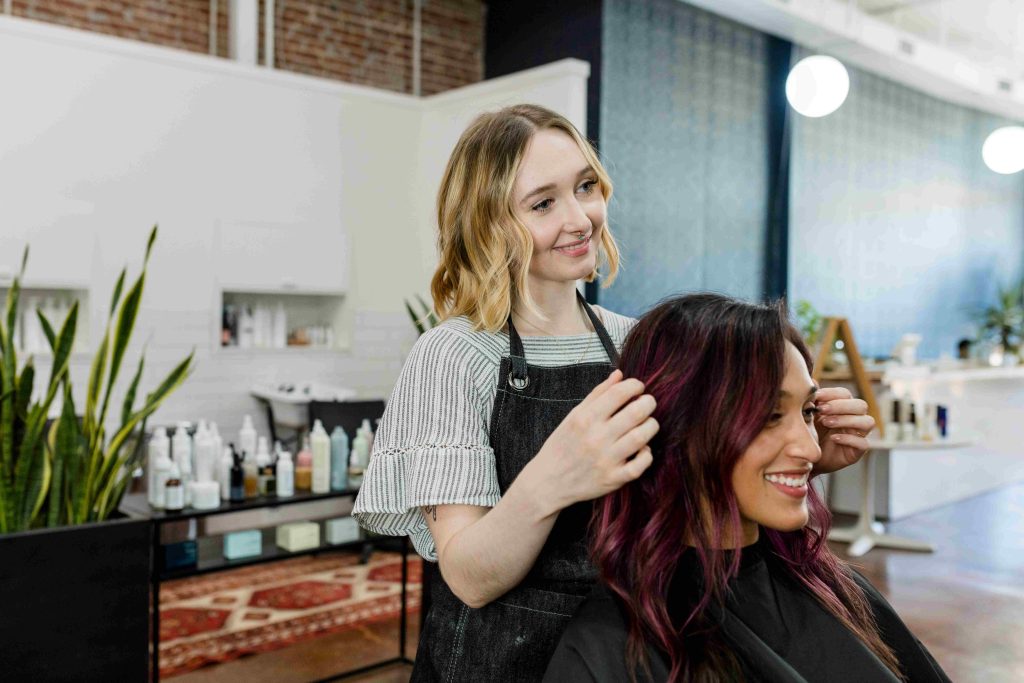
UV rays are the main factor that causes hair dye to fade. Unlike melanin, which naturally protects hair, artificial dyes break down much more easily. So, without UV protection, your color-treated hair is at risk of losing its vibrancy much faster.
Culprit #2: Chlorine

Chlorine from pool water can really do a number on your hair’s cuticle. It strips away the natural oils that keep your hair protected, making it dry and brittle. Plus, chlorine reacts with the keratin in your hair, weakening the bonds and causing the cuticle cells to lift or break off. This oxidative damage makes your hair more porous and vulnerable to other environmental factors.
Are Some Hair Types More Vulnerable to Summer Hair Damage?
Yes! The less pigment your hair contains the more vulnerable it will be to sun damage and dehydration. Hair that’s been bleached and has signs of heat damage needs protection more than any other hair type.
How to Take Care of Your Hair: Easy Summer Hair Care Tips That Work Every Time
Use Hair Products with SPF
Add a leave-in conditioner with SPF or a sunscreen hair spray to your routine. It not only preserves your hair color—whether natural or dyed—but also keeps your locks from becoming brittle and frizzy. You’ll enjoy hair that’s supple, shiny, and sleek all summer long!
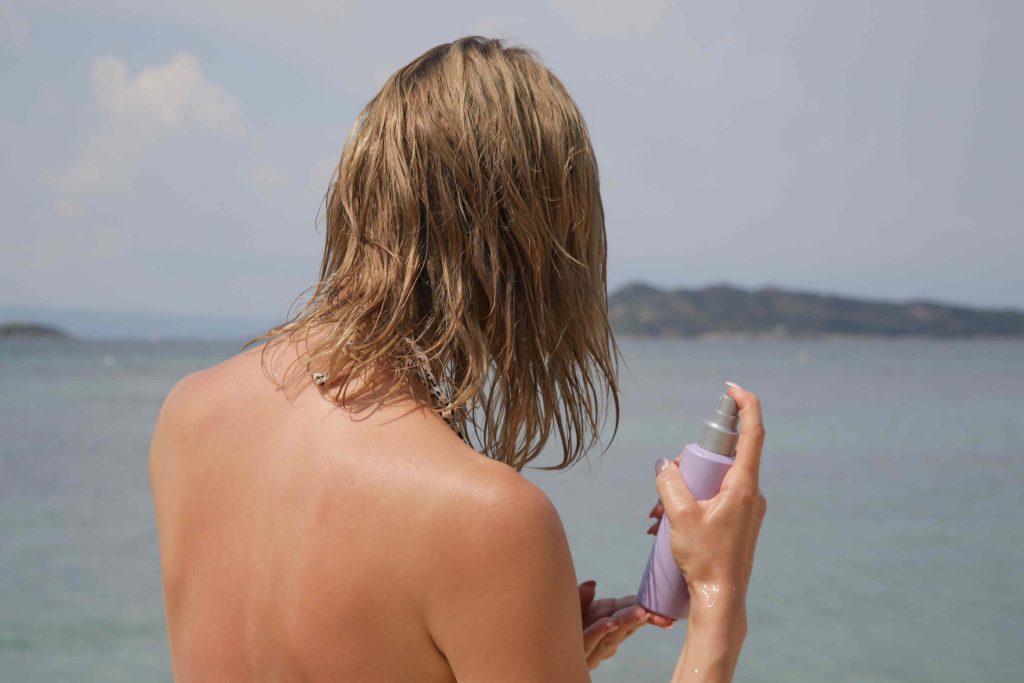
The Skin on Your Scalp Needs UV Protection too
Think your hair gives your scalp all the protection it needs? That’s true if you have luxurious afro hair. For the rest of us, though, our scalps can get sunburned just like any other skin when left unprotected. Putting sunscreen on your scalp might seem tricky, but luckily, we now have sunscreen sprays and powders to save the day!
Wear a Sun Hat
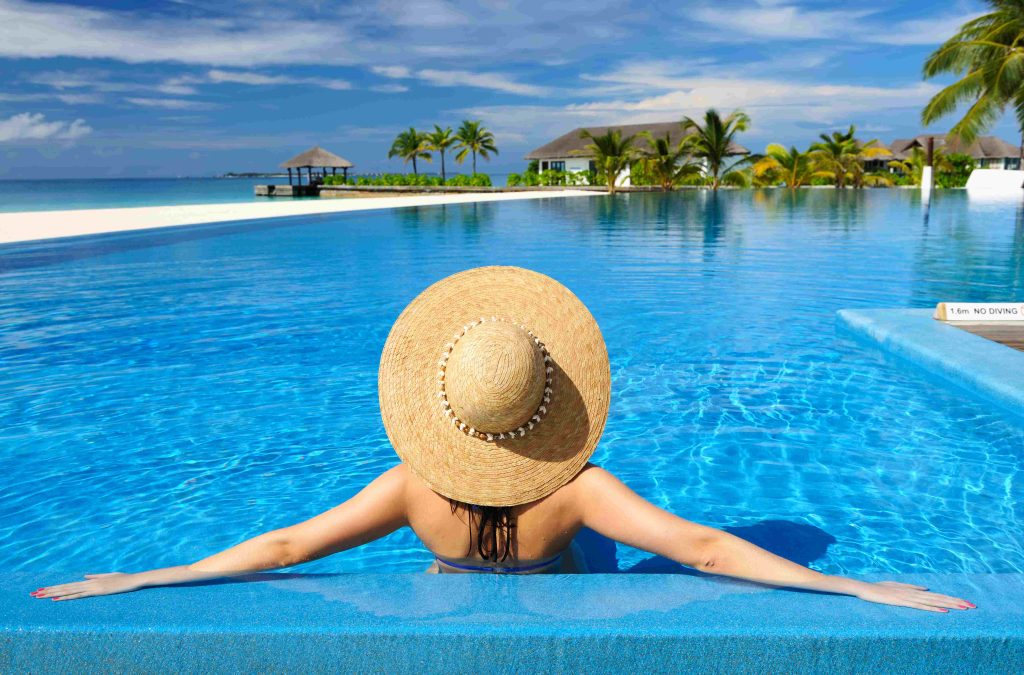
Wearing a sun hat is one of the best, easiest, and cheapest ways to protect your hair and scalp from sun damage. Plus, a wide-brimmed hat creates shade that protects your face and neck from direct sunlight and reduces eye discomfort (who wants extra fine lines and wrinkles from squinting, anyway?!)
Consider Silicone Leave-ins
Planning to hang out by the pool a lot? Consider a non-soluble silicone spray or leave-in conditioner! Non-soluble silicones like dimethicone and dimethiconol aren’t recommended for long-term use because they can build up and cause issues (we have a post about silicones in hair products—be sure to check it out!). But for a short vacation, they might be a very good idea! These silicones form a thin, water-resistant layer around your hair shaft, helping the cuticles lie flat and snug, preventing chlorine, chemicals, and minerals from being absorbed by your hair. If you hate the idea of having to read ingredient lists, use an ingredient scanner app like OnSkin—take a picture of the bottle and the app will break it down for you.
Don’t Forget to Rinse after Swimming
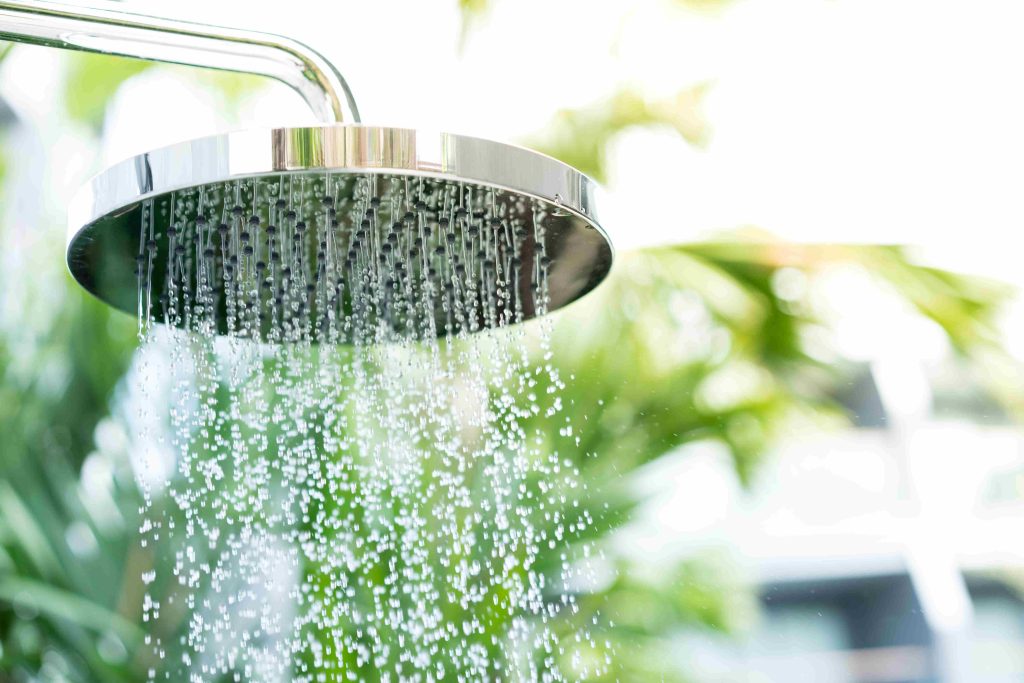
Both ocean and pool water can be super drying to your hair. Leaving it on is like wearing a hair-damaging mask. Make sure to rinse with fresh water and reapply sun protection every time you swim—your hair will appreciate it! If you can’t stand chlorine smell, try a chlorine-removing shampoo.
Get Your Hair Wet with Tap Water before Going into the Pool
Here’s an easy summer hair care tip to help minimize your hair’s exposure to chlorine and other pool chemicals: wet your hair with fresh water before diving in! When your hair is already soaked with clean water, it absorbs much less chlorinated water from the pool. This step is especially crucial for bleached hair, which is more permeable and porous and can even turn green from pool water—we have a separate post on that.
Mitigate Frequent Washing
When it’s hot and we’re on vacation, we tend to wash our hair more often. But frequent shampooing strips our hair of its natural oils, leaving it unprotected and vulnerable. Try cutting back on shampoo—use it every other day instead of daily. Just rinse your hair with clean water and apply conditioner. This can help mitigate the drying effects of overwashing and keep those natural oils working a little longer.
Cut Down on Styling

It might be a good idea to lay off heat styling your hair or at least try to cut down on it. Summertime is a stressful enough time for your locks with all the extra sun exposure and chlorinated water masks. If you can’t imagine yourself crossing the doorstep without styling your hair at least ensure you use minimal possible temperature settings and apply heat protection meticulously.
FAQ
-
Where do I start with OnSkin?
Download the app and think of a product you’d like to know more about. Then, go to the main screen and choose how you’d like to get the info —by manually looking it up in the search bar, by scanning its barcode, or by simply taking a picture of the packaging. Once you’ve done any of these, you can see how safe the product is and if it suits your skin or hair (if this analysis is available).
-
What is Safety Rating, and how is it calculated?
In OnSkin, we base product rates on ingredients. Each is closely studied by our medical team and then evaluated. This way, each product gets a score from 0 to 100, with 100 as the safest level.
Safety Levels
- Excellent (76–100)
- Good (51–75)
- Not great (26–50)
- Bad (0–25)
These scores are backed by the latest scientific studies. You can find links to the resources we’ve used on each ingredient page. To assess the safety of product ingredients, we evaluate them according to the following parameters/criteria
- Endocrine disruption risk / Reproductive toxicity
Indicates the probability of mimicking, blocking, or interfering with the body hormones.
- Сarcinogenicity
Measures the potential risk of inducing cancer.
- Allergy risk
Estimates the probability of an allergic reaction.
- High concentration alert
Determines the risk of being unsafe in certain amounts.
-
What is Skin Match?
Based on the info you input about your skin type, age, skin care goal, and other “settings,” OnSkin checks how well a product is tailored to your unique skin needs — it’s basically like a dermatologist helping you find the right products, minus the fees and the long wait. The product you’re checking might be labeled as It’s a match!, Hit-or-miss, or Not a match for you. The app also detects ingredient groups such as Anti-acne, Anti-inflammatory, Moisturizes, May be drying, Comedogenic, and others — by tapping one, you see exactly what ingredients from this or that group are in the product.
-
I seem to have a problem with using the app. Who should I contact?
Please reach out to us at [email protected], and we’ll carefully look into your issue. Your ideas for improving the app are also very welcome!
-
Do you have an Android version?
Not yet! Hey Android users, we hear you, and we're thinking about making an Android version, but we haven't started the development yet.
Tracker Sent!
It’s on the way to your inbox.


